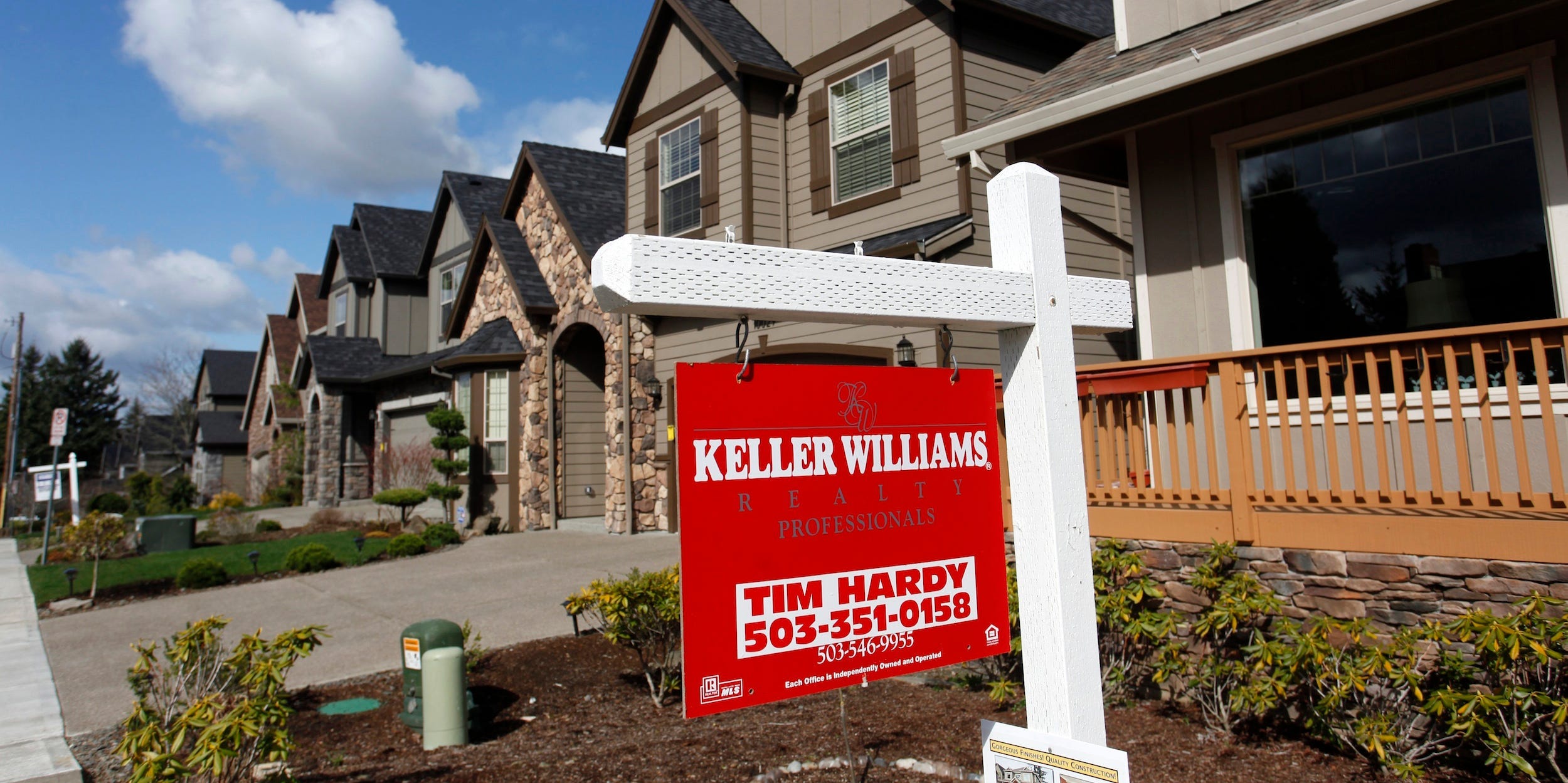
Reuters
- Existing home sales fell 6.6% in February to the slowest rate since August, according to NAR data.
- Inventory held at a record-low 1.03 million, underscoring the market's supply-demand imbalance.
- The median selling price crept higher to $313,000 to tie the record high seen in October.
- See more stories on Insider's business page.
Sales of previously owned homes in the US declined more than expected in February as the housing market's supply shortage further curbed the recent buying spree.
Existing home sales fell 6.6% last month to a seasonally adjusted annual rate of 6.22 million, according to data published by the National Association of Realtors. The reading is the first decline since November and drags the pace of sales to its lowest since August. Still, sales are up 9.1% from the year-ago level.
Economists surveyed by Bloomberg had expected a more modest drop to a 6.49 million sales rate.
The median existing-home price crept higher to $313,000, marking 108 consecutive months of year-over-year gains. The new level ties October's record high and sits 15.8% above the year-ago level.
Home inventory remained at a record-low 1.03 million units at the end of last month. Unsold units now count for two months of sales at their current rate, up slightly from January's 1.9 month supply.
Supply was down 29.5% year-over-year at the end of February, underscoring the shortage that's contributed to higher prices and a now-slowing pace of sales. Home purchases first boomed at the start of the pandemic as record-low interest rates pulled borrowing costs lower. Mortgage rates set several record lows in 2020 and further boosted buying activity.
Supply strains have since lifted prices even higher, and mortgage rates are now reversing their months-long decline. Lumber shortages have also pressured costs, with the National Association of Home Builders saying last month that rising material costs are adding $24,000 to the price of new homes.
These obstacles will likely curb the market's rally as the economy reopens, Nancy Vanden Houten, lead US economist at Oxford Economics, said.
"We look for the pace of existing-home sales to drift lower over the course of the year as headwinds from a lack of supply and eroding affordability are partially offset by the tailwinds of still-strong demand, particularly from younger households and a solid recovery," she added.
The National Association of Realtors is more bullish toward the strained market. While affordability is weakening, strong savings and a boost from Democrats' latest relief package should keep demand elevated through 2021, Lawrence Yun, chief economist at NAR, said.
"Various stimulus packages are expected and they will indeed help, but an increase in inventory is the best way to address surging home costs," he added.
Contractors are struggling to rise to the occasion. Building starts for new privately owned residences fell 10.3% to a seasonally adjusted annual rate of 1.42 million in February, according to the Census Bureau. That's the lowest level since August and marks a second straight month of decline.
